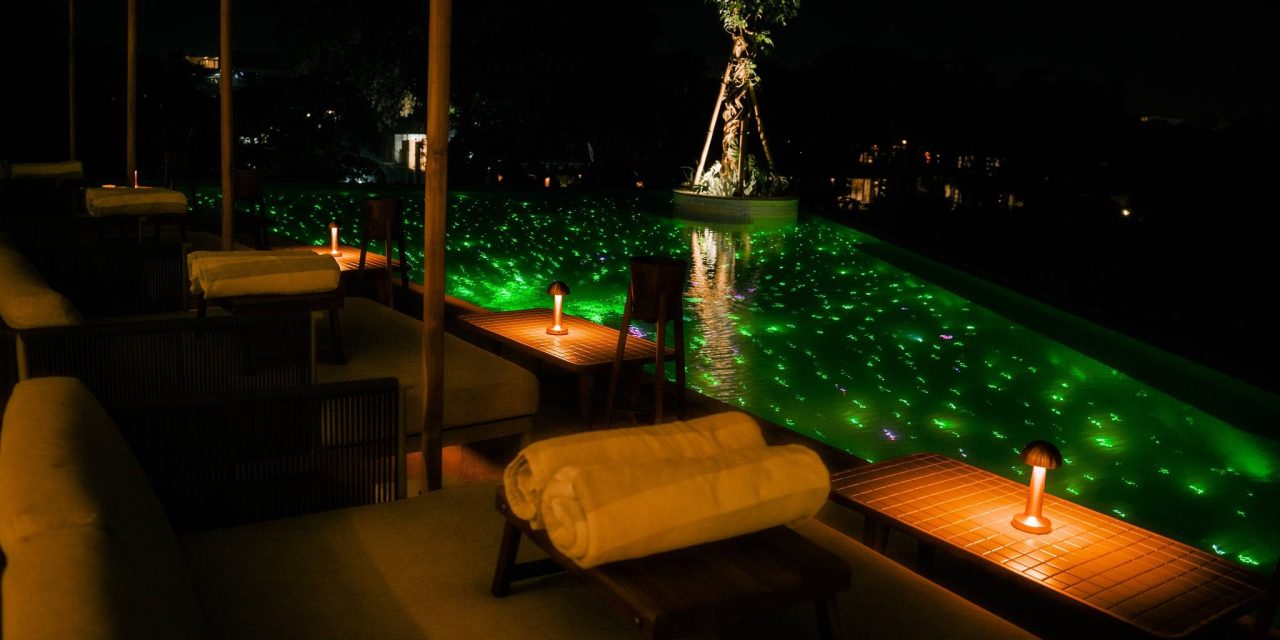If you’ve ever wandered through the idyllic streets of Canggu, Bali, you might have stumbled upon something that takes your breath away—the stunning temples that speckle this vibrant area. As someone who has explored this surfer haven, I can tell you that the unique architecture of Canggu temples is not just a feast for the eyes; it’s a journey into the heart of Balinese culture and spirituality.
A Touch of Tradition
The first time I encountered a temple in Canggu, it felt like stepping into a different world. I had just finished a surf session at Echo Beach. As I walked back, drenched and enjoying the ocean breeze, I spotted *Pura Batu Bolong*, a temple literally perched on the edge of a rocky outcrop. Its intricate carvings and the dramatic backdrop of the crashing waves drew me closer.
Each temple in Canggu showcases a rich tapestry of Balinese architecture, embodying centuries-old traditions with modern influences. For instance, *Pura Batu Bolong* features a stunning gate, or *Candi Bentar*, that splits the structure in half—a hallmark of Balinese temple architecture. As I admired the soaring walls decorated with intricate reliefs depicting various gods and myths, I realized each detail tells a story, beckoning visitors to learn more about Bali’s rich history.
Nature and Spirituality Hand in Hand
What truly sets Canggu temples apart is their seamless integration with nature. The lush green surroundings and the ocean views create a magical atmosphere. During one of my early morning yoga sessions at a nearby retreat, I learned that many temples are carefully positioned to honor natural elements like mountains, rivers, and the sea.
Take *Pura Taman Sari* as an example. Nestled amidst lush rice paddies, its serene layout encourages meditation and reflection. I’ll never forget the tranquility of that place; as I sat cross-legged on the warm stone steps, I felt an overwhelming sense of peace wash over me. Locals often come here to make offerings, and I’ve participated in this lovely ritual. It deepened my appreciation for the temple’s purpose and its architectural design, which invites all who visit to pause and connect with something larger than themselves.
Reflecting the Balinese Way of Life
Now, let’s talk about *Pura Luhur Batukaru*, which is located a bit of a drive from Canggu, but so worth it. This temple, situated on the slopes of Mount Batukaru, reveals the unique appeal of Balinese architecture by celebrating its surroundings. The dark stone structures, heightened by moss and nature’s embrace, encapsulate the philosophy of *Tri Hita Karana*—the Balinese concept that promotes harmonizing with God, people, and nature.
I enjoyed a day trip there, surrounded by towering trees and the soft sound of a nearby waterfall. I took a moment to sit in the *Bale* (a traditional pavilion) and noticed the delicate carvings on the temple’s walls depicting scenes from Hindu epics. It struck me how every architectural element—be it a statue, a roof, or a pediment—offers a glimpse into the belief systems that shape the community.
Modern Twists on Ancient Designs
What’s fascinating about the temples in Canggu is how they inspire contemporary architecture. For instance, many cafes and homes in the area draw upon traditional Balinese styles. I recall sitting at a beachfront café and marvelling at the design that incorporated wooden beams and thatched roofs, reminiscent of temple structures.
An excellent contrast can be seen at *Milk & Madu*, where the modern vibes of gourmet food collide wonderfully with traditional aesthetics. There’s something poetic about sipping on organic smoothies with a view of lush greenery and temple architecture—an excellent example of old meeting new in the most harmonious way.
Practical Tips for Visiting Canggu Temples
If you’re planning to explore the unique architecture of Canggu temples, here are some tips to make your experience enjoyable:
1. Dress Respectfully: Bali is steeped in tradition, and when visiting temples, modest attire is key. Sarongs (which are often provided at temple entrances) and covered shoulders show respect for the sacred spaces.
2. Timing is Everything: Early mornings or late afternoons are divine for temple visits. The lighting is perfect for photography, and the ambiance is serene. Plus, it’s cooler outside!
3. Engage with Locals: Don’t hesitate to strike up a conversation with locals. They often have fascinating insights about the temple’s architecture and significance, enriching your visit.
4. Take Your Time: Spend a few moments at each temple. Meditate, take pictures, or simply soak in the surroundings. Each stone and relief has a story to tell.
5. Respect Rituals: If you stumble upon a ceremony, observe quietly. These rituals are deeply important to the community, and your respectful presence can be an integral part of the experience.
Concluding Thoughts
Canggu’s temples reflect a beautiful melding of the past with the present, showcasing a unique architecture that narrates the island’s culture and spirituality. Whether you’re a historian, a photographer, a spiritual seeker, or just a curious traveler, the temples in Canggu invite you to partake in their stories. So, the next time you surf a wave or sip a fresh coconut, take a moment to appreciate the stunning architecture around you. After all, Canggu is not just a destination; it’s a journey into the heart of Bali’s soul.






